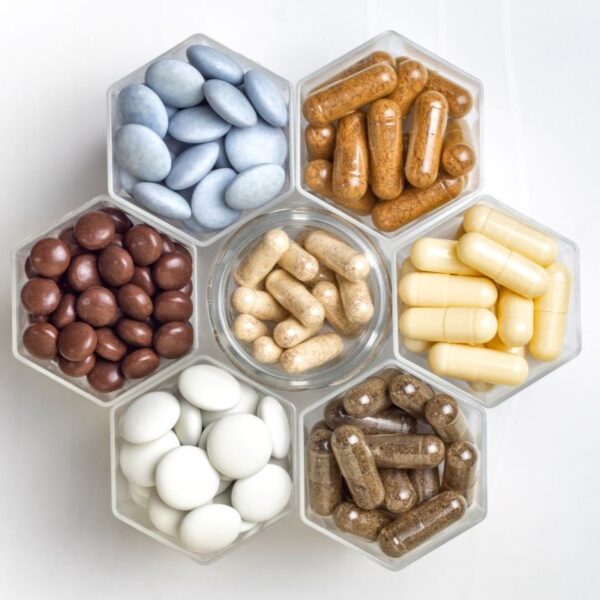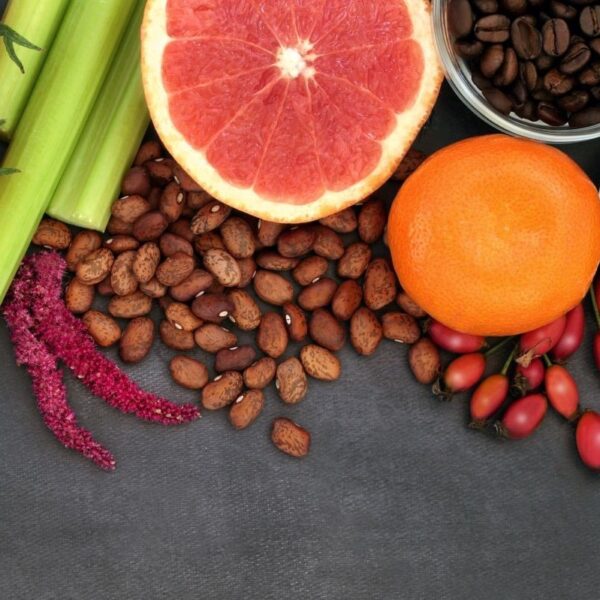What is Maltitol?
Maltitol (C12H24O11; 4-O-α-glucopyranosyl-D-sorbitol) is a naturally occurring sugar alcohol, or polyol — a water-soluble compound with a sweet taste. It can also be synthesized by the catalytic conversion of the disaccharide maltose, a sugar found in corn, barley, wheat, and potatoes.
Maltose has a similar taste and sweetness to sugar, though it provides fewer calories per gram. It has been widely used in the food industry as a substitute for table sugar (sucrose). It’s typically included in foods marketed as “sugar-free” or “reduced-sugar” because it has fewer calories than regular sugar. The functional and nutritional benefits of maltitol make it an artificial sweetener of choice for many formulators.

Maltose has a similar taste and sweetness to sugar, though it provides fewer calories per gram. It has been widely used in the food industry as a substitute for table sugar (sucrose). It’s typically included in foods marketed as “sugar-free” or “reduced-sugar” because it has fewer calories than regular sugar. The functional and nutritional benefits of maltitol make it an artificial sweetener of choice for many formulators.
Use of Maltitol in Food Products
Maltitol is typically marketed as a sweetener. Unlike many other artificial sweeteners, it provides sucrose’s bulk, texture, and preservative benefits. Its intrinsic properties enable it to offer good humidity and moisture control, stabilizing products and improving texture and mouthfeel.
Applications in Food Products
The functions maltitol can play in food items include:
- Sweetening agent
- Humectant
- Taste masking agent
- Taste enhancer
- Bodying agent
- Anti-crystallizing agent
- Bulking agent
- Suspending agent
Maltitol is a common ingredient in candies, chewing gum, chocolate, and baked goods. It has a sweet taste similar to sugar, but it has about half the calories and a lower glycemic index, meaning it has less impact on blood sugar levels.
Many low-calorie sweeteners are used in the food industry to impart sweetness to products. Several sugar alcohols are similar to maltitol: erythritol, sorbitol, and xylitol. Also, there are a few other low-calorie sweeteners: monk fruit extract, stevia, aspartame, neotame, etc. To see the comparative study of their properties, usage, and functionalities, check this article.
Product Examples
Here are some examples of how maltitol is used in various food products.
| Type | Examples |
|---|---|
| Bakery | Cookies, Cakes, Pastries |
| Confectionary | Candy, Chocolate, Chewing Gum, Frozen Dessert |
| Dairy | Ice Cream, Flavored Yogurt |
| Fruit Processing | Fruit Juices, Candied Fruits |
| Snacks | Cereals, Crisps |
| Convenience Foods | Jams, Jellies, Ketchup, Cereals |
| Pharmaceuticals & Nutraceuticals | Oral Suspensions, Syrups, Tablets |
| Functional Foods & Beverages | Energy Drinks, Multi-grain Bars, Protein Bars |
Maltitol is a suitable ingredient for foods and beverages consumed by groups with special dietary needs (e.g., diabetics).
| Diet Category | Properties |
|---|---|
| Diabetics (Low GI) | Maltitol’s glycemic index (GI) stands at 35, which is much lower than that of regular table sugar i.e. 65. |
| Diet Food (Low-Calorie) | Maltitol provides lower calories (~2.1 Cal/g) than table sugar. Therefore, it is an alternative sweetener to be used in food for people with calorific restrictions. |
| Keto Diet | Maltitol is keto-friendly. |
Many products benefit from maltitol. Here are a few examples.
| Food Product | Benefits of Maltitol |
|---|---|
| Reduced sugar baked goods | Improved taste and reduced staling |
| Chocolate powder | Improved textural and sensory properties |
| Milk powder | Improved rheological properties |
| Frozen dairy foods and ice cream | Improved creaminess, lower glycaemic index |
| Drinkable yogurts and flavored milk | Reduced calorific content, better texture and sweetness profile |
| Candies and hard sweets | Maintain visual appearance during thermal processing |
| Pectin jellies | Lower energy value, better physicochemical properties |
| Marshmallow |
Properties of Maltitol
| Physical Form | Powder, Syrup, Crystals, and Granules |
| Solubility | Freely Soluble in water (175g/100ml) Sparingly soluble in ethanol & methanol |
| Viscosity | 100000 cP (LYCASIN® 85/55 Maltitol, 30 °C) |
| Calorific Value | 2.1 Cal/g |
| Dextrose Equivalence | 10% |
| Relative Sweetness w.r.t Sucrose | 90% |
| Glycemic Index | 35 |
| Shelf Life | ~36 months |
| Storage Conditions | 16 °C -38°C |
| Origin | Plant- Corn/ Wheat/ Potato etc. |
| GMO Status | Available in GMO & Non-GMO variants |
| Moisture Content | Powder: ~1% Syrup: ~25% |
Stability
Maltitol is relatively stable compared to other sugar alcohols. It can withstand temperatures up to 200°C (392°F) and is not affected by changes in pH. Maltitol syrup is light and stable and can tolerate various humidity levels. Maltitol is oxidation-resistant and can remain stable when stored in a cool, dry place.
Sensory Properties
Maltitol has a sweet taste and a pleasant mouthfeel. It does not have an aftertaste and leaves the palate clean.
Metabolism
Maltitol is slowly — but not wholly — absorbed by the body and metabolized by the liver. It is not entirely broken down like other sugars and therefore does not cause a spike in blood sugar levels. The glycemic index of maltitol is 35.
Cariogenicity
Maltitol doesn’t possess the same cariogenic properties as other sugars, meaning it doesn’t promote tooth decay.
Typical Formulations
Chewing Gums
As a sweetener in chewing gum, maltitol improves texture, flavor, and shelf life. Its humectant properties help retain moisture, which enhances the desired texture and consistency of the gum.
Maltitol is co-dried with other sweeteners or co-evaporated with a plasticizing syrup to produce unique sweetening ingredients and syrups for gum. At about 0.5% to 25%, maltitol may partly or totally replace the bulk sweeteners in sugar gum.
Here is an example of a chewing gum formulation table with maltitol along with the % weight of ingredients:
| Ingredient | % Composition |
|---|---|
| Maltitol | 30 |
| Sorbitol | 30 |
| Glycerol | 20 |
| Gum Base | 10 |
| Xylitol | 5 |
| Acesulfame K | 2 |
| Natural & Artificial Flavors | 2 |
| Soy Lecithin | 1 |
| Colors | 0.5 |
Ice Cream
As a fat substitute and sugar replacement in frozen dairy products and ice cream, maltitol helps to enhance the creaminess, stickiness, and shelf life. With a freezing point comparable to full-sugar ice cream, the anti-crystallizing properties of maltitol help with the texture of ice cream and frozen desserts.
Here is an example of an ice cream formulation table with maltitol along with the % weight of ingredients:
| Ingredient | % Composition |
|---|---|
| Full Fat Milk | 30 |
| Cream | 30 |
| Glycerol | 20 |
| Maltitol | 10 |
| Trehalose | 5 |
Compound Milk Chocolate
Maltitol is a suitable alternative to sucrose in compound chocolates. It contributes to the sweetness and can help with textural properties. The following formulation of compound chocolate with total substitution of sucrose with maltitol resulted in similar flow properties.
Here is an example of a compound chocolate formulation table with maltitol along with the % weight of ingredients:
| Ingredient | % Composition |
|---|---|
| Cocoa Powder | 6 |
| Maltitol | 28 |
| Xylitol | 4 |
| Whole Milk Powder | 26 |
| Cocoa Butter Substitute | 34.5 |
| Lecithin | 0.5 |
| Vanillin | 0.01 |
Maltitol Formulation Considerations
Stability
| Phase Stability | Extremely stable against crystallization |
| Oxidative Stability | Stable |
| Light Stability | Stable |
| pH Stability | Resistant to hydrolysis at pH>3.5 |
| Temperature Stability | Stable at temperature <160°C |
Hygroscopicity
Crystalline maltitol is one of the least hygroscopic polyols (hygroscopic properties in relative atmospheric humidity of 80%). This property makes its storage and transportation easy and cost-effective.
Interaction with Other Ingredients
Maltitol and its syrups don’t contribute to browning or cause a Maillard reaction. Additionally, maltitol doesn’t react with amino acids, and there’s no evidence of adverse interactions with other components.
Cost-effectiveness
Maltitol can provide sucrose’s bulk, texture, and preservative benefits in sugar-free or reduced-calorie products. Although it is expensive compared to sucrose, it is a versatile ingredient with multiple functionalities and lower calorific value.
Dosage Comparison
Obtain the exact amount of sweetness as sugar by adding ~1.1 g of maltitol instead of 1 g of sucrose in the recipe.
Maltitol Safety & Regulatory Considerations
Health authorities worldwide have reviewed maltitol safety, including the World Health Organization, the European Union, and countries such as Australia and Canada. The U.S. Food and Drug Administration (FDA) has classified maltitol as generally considered safe (GRAS) for use in food. The food additive number of maltitol is E965.
Acceptable Per Day Usage (ADI)
The World Health Organization (WHO) has set the Acceptable Daily Intake (ADI) of maltitol at 9 mg/kg body weight/day. The laxative effect of maltitol typically occurs at 20gm (or more) dosages daily.
Health Effects of Maltitol on Humans
Maltitol is generally considered safe for consumption by most people. However, it can cause digestive issues in some individuals when consumed in large amounts.
Maltitol does not increase insulin levels as much as sugar does. This property benefits people with diabetes or anyone trying to manage their blood sugar levels.
However, it is essential to note that Maltitol is still a carbohydrate and can raise blood glucose levels if consumed in large amounts. Some people may be more sensitive to the side effects of Maltitol and other sugar alcohols and may experience digestive issues such as bloating, gas, and diarrhea. Therefore, it is crucial to consume Maltitol in moderation and to be aware of any potential side effects.
Fun Facts About Maltitol
- Maltitol has a characteristic cooling effect on the tongue, sometimes leading to the joke that it’s like eating a snow cone
- Maltitol is about 90% as sweet as sugar but has nearly half the calories
- Maltitol is a non-cariogenic sweetener that does not promote tooth decay
Additional Sources & Resources
- AltMeyers – Maltitol
- Google Patents – Chewing gum containing maltitol








